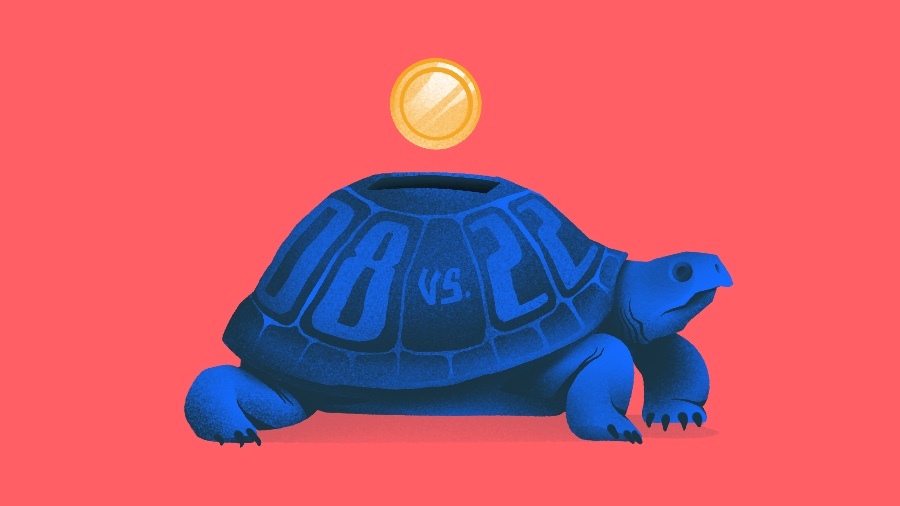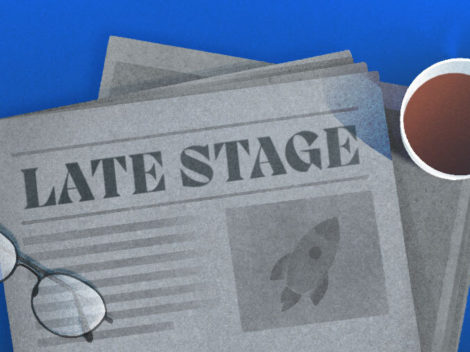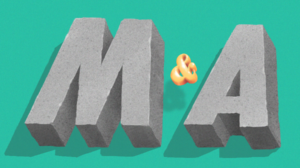Editors Note: This is the second part in a two-part series looking at the lessons learned from the financial crisis and venture capital’s pandemic rally. Read Part 1 here.
Barely three months into this year, the current venture market already feels much different than that of 2021.
While last year saw sky-high valuations and VC dollars flood the market at a never-before rate—this year has been full of news about valuation cuts, a slowdown in funding, and a general malaise in the private market that was brought about by a shaky public market, exploding inflation, geopolitical tensions and a continuing pandemic.
However, it was not that long ago when the VC market hit its last major drop. While it’s true March 2020 brought about the dreaded uncertainty investors hate, the most recent significant dip was in 2008—a global financial crisis brought about by the implosion of the mortgage industry, cautionary lending trends and soaring unemployment.
Many VCs in the market remember those times—and even the more infamous dot-com bust before it in 2001—and while those moments do not provide exact parallels, there are lessons to be learned from previous cycles.
Search less. Close more.
Grow your revenue with all-in-one prospecting solutions powered by the leader in private-company data.
Tracking downturns
Hany Nada remembers both the slides of 2001 and 2008, as he was just co-founding the venture firm GGV Capital in 2000 when the dot-com bubble burst. But, Nada—a co-founder and partner at ACME Capital who has invested in such companies as DraftKings, Houzz and Alibaba—sees those downturns as two distinct animals.
The latter in 2008 was brought about by a global financial crisis and was more of a V-shaped downturn—where the high for the time period on Nasdaq hit in October 2007 was eventually reached again less than four years later in April 2011.
The 2001 dot-com bubble burst had much more lingering effects; Nasdaq hit its high in March 2000, but did not get back to that level again until 2014.
For reference, last Nasdaq hit a new high last November, and now the question is how long it will take to get back there again.
“Is this going to take four or five years?” he asked. “Or maybe 24 months to recover?” Nada said.
If he were to predict, this current market feels much more like 2008-09, and not the dramatic 2001 shift, he said.
“While fundraising may be difficult right now, customers are still buying the products,” Nada said. “This is more of a financial issue than a demand issue.”
Fundraising started to get difficult in the fourth quarter of last year, with the steepest cuts happening to growth rounds that can be down 30 percent to 50 percent, Nada said. Just last week, delivery startup Instacart slashed its own valuation by nearly 40 percent.
Valuation drops have not affected the early- or seed stages yet, but likely will, he added.
Despite those cuts in valuations, others view the current state of the startup world similar to how Nada sees it.
Don Butler started in the venture world in the late 1990s and has been at Thomvest Ventures for more than 20 years, now serving as managing director. He said he sees some parallels between now and the global financial crisis of 2008, but also some differences.
“Yes, there are some similarities,” said Butler, whose investments have included Lending Club, Cylance and Kabbage. “Part of that is the unknown that we faced then and face now.”
It’s true investors hate the unknown and uncertainty, but it’s equally true they love cash—which also is a compelling difference between now and 2008. When the financial crisis hit, venture and startups were just starting to come off the Webvan and Pets.com highs—and then lows—of the late 1990s and early 2000s. Nearly any startup had raised a warchest like many have done in the last 18 months, where valuations went nuts and investors couldn’t stop themselves.
“Companies raised at these high valuations and they raised a lot,” Butler said. “Companies have these high cash balances—north of $100 million. The average company I see has about two years worth of cash on their balance sheet. People just have so much more money to weather the storm.”
The storm itself also is very dissimilar, said Robert Siegel—a lecturer in management at Stanford Graduate School of Business and partner at firms including XSeed Capital and Piva Capital.
The issues in 2001 were due to investments in companies that had no viable business model. Years later, the 2008 downturn was not about the tech sector, but rather large global financial institutions—think Lehman’s collapse—facing mounting uncertainty.
“It was a time of terror,” he said. “People were scared. People stopped spending money”
That same fear does not exist now, Siegel said. Instead, he sees the industry digesting some of the past excesses and “gravity coming back” as the 30x multiples on trailing 12 months (TTM) revenue are coming back to the more normal 8x to 10x.
Lessons learned: ‘Have cash’
Although there may not be panic, investors who remember 2001 and 2008—and even March 2020 for that matter—think there are lessons that can be gleaned from those moments in history, especially for an industry as young as venture.
“One thing is to make sure your portfolio (companies) have cash,” said Michael Skok, founding partner at Underscore VC and an entrepreneur in residence at the Harvard Business School. Skok entered venture just after the dot-com bubble and was an early investor in companies including Acquia and Demandware.
“Also make sure they are running efficiently,” he adds. “For years, it’s just been about growth, growth.”
There’s also the old adage that all investors sing: Great companies are built in difficult times (or however you want to phrase it).
“This is when you need to be contrarian,” Skok said. “Be greedy when others are fearful.”
Everyone knows companies like Amazon and Google were built in the runup to the 2001 collapse, while Twitter, Uber, Airbnb, Cloudflare Twilio, Okta and scores of others were founded in the lead-up or during the financial crisis of 2008 as fintech, social media and the digital mobile economy was built.
“Be bold,” Skok said.
Another takeaway from 2008 includes forgetting about optics, Nada said. Founders may need to investigate raising the dreaded “down” round, or possibly a round with pay-to-play provisions—which basically require existing investors to invest on a pro rata basis in current or future rounds or lose some of their preferential rights. Such provisions are sometimes added to down rounds to make sure previous investors pony up.
Moving forward
The current market shift also could be an accelerant for a societal jump to the next platform, Nada said.
The 2001 change helped bring about a transformation in how people used the web and the devices it’s accessed on. Less than a decade later, 2008 brought significant changes as social media took hold and mobile computing took off.
Blockchain, advanced sensors and a developing IoT network are all things Nada said he will watch as possible break-out stars during this market disruption.
Others, including Skok, said the COVID pandemic highlighted issues like supply chain disruption that could provide huge opportunities for tech companies—as could the crypto sector and the buildout of Web3 with many infrastructure startups being built up right now in the space.
“People need the picks and shovels,” he said. “You always start at the bottom of the stack.”
A few control a lot
Another thing to watch is the formation of funds, VCs say.
Firms started to downsize funds and even give money back to LPs after the 2001 dot-com bust as venture firms disappeared. Then after 2008, the market saw an explosion of fund managers.
While there are now more firms than ever, the majority of the record-setting venture dollars in the market is concentrated in a handful of large firms.
Just this calendar year alone, Andreessen Horowitz announced a fresh $9 billion for its venture, growth and bio funds, San Francisco-based Founders Fund recently closed more than $5 billion in two new funds that will be dedicated to both early- and late-stage investing, and just this week it was reported Sequoia Capital China is raising four new funds totaling $8 billion.
That’s just a small smattering of the large funds raised by some of the biggest names in the venture business recently. How these firms, which control so much, react will tell much about the immediate future of the market.
There have already been reports that large crossover firms such as Tiger Global and D1 Capital are pulling back on late-stage investments, with some partners at Tiger reportedly looking closely at more seed rounds.
“That was certainly one thing we learned in both ’01 and ’08,” Butler said. “You will learn some syndicate investors will work with founders and others will cut and run.”
With fewer hands controlling the money, Nada said, how those firms react to the current downturn will have an outsized impact on the private market and bears close watching.
The unknown
With all of that said, the one thing to also remember is no two downturns are exactly the same—and no one knows what comes next.
“This seems like more of a cyclical thing right now, because of interest rates, high valuations, inflation,” Siegel said. “Now could it be systemic? That depends on what happens next.”
“Back in 2008, we were in a financial services meltdown,” said Jeff Clavier, founder and managing partner at Uncork Capital, which he started in 2004. “We didn’t even know if your cash was safe.
“Everyone went into triage mode,” he continued. “It was a race to the best companies. We aren’t seeing that much now.”
Clavier—who previously invested in companies including Fitbit, Postmates and Poshmark—said now he sees consumer businesses taking more of the brunt of the pullbacks in the markets, and by the end of April we may have a better idea of what is coming after a lot of enterprise SaaS companies close their books on the first quarter.
“We didn’t see a big pullback, pullouts,” he said. “We don’t see it like we did in 2008 … Now could this change with geopolitical issues and other things? Sure. But right now it is still business as usual. … We will see if that changes.”
No one knows what big event will occur next, or how investors take it, Siegel said—just like the unknown led to wild 30-point daily fluctuations in Yahoo stock back in the first venture dip of ’01.
“What comes next?” he asked. “No one knows and no one can say they know.”
Further reading:
Illustration: Dom Guzman

Stay up to date with recent funding rounds, acquisitions, and more with the Crunchbase Daily.












67.1K Followers